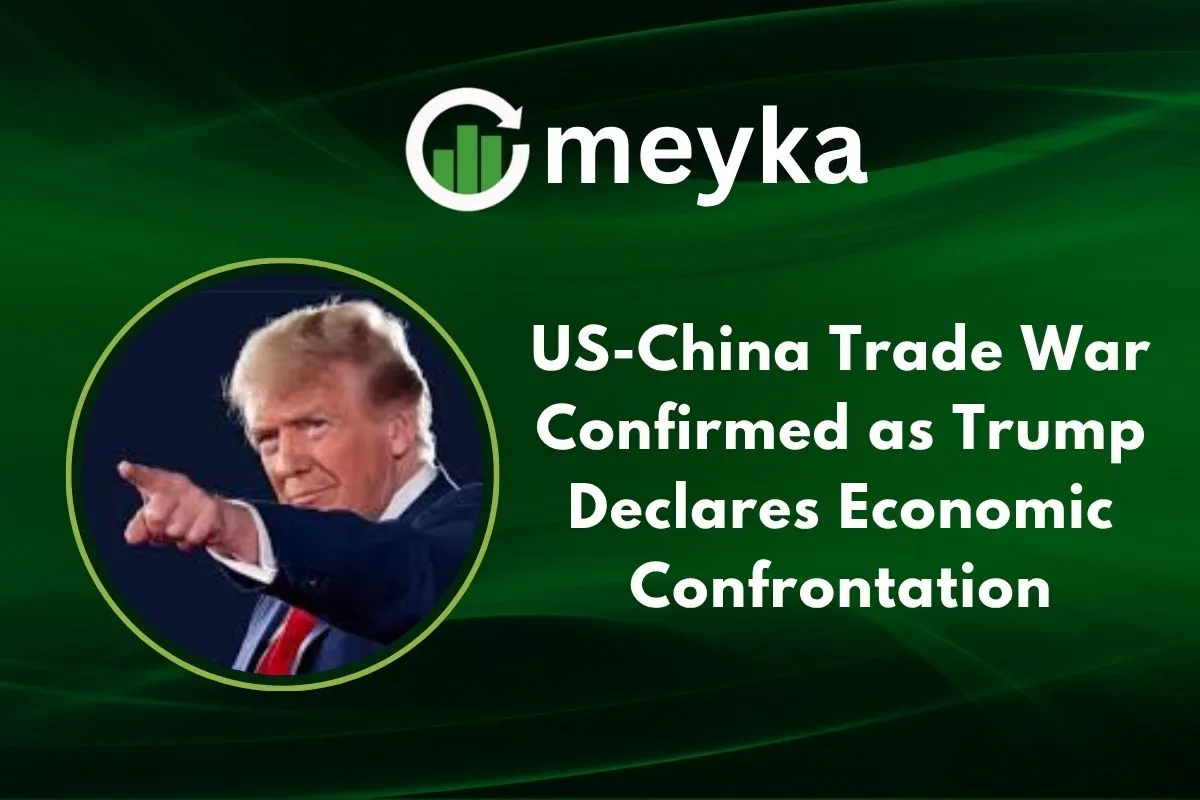US-China Trade War Confirmed as Trump Declares Economic Confrontation
The U.S. and China have once again entered a heightened phase of economic strife. Former President Donald Trump recently declared that the U.S. will impose 100 percent tariffs on Chinese goods starting November 1, citing Beijing’s export restrictions on rare earth materials. China responded by warning that the U.S. is trying to intimidate, and that it “will fight to the end.”
This is not a minor spat. The U.S. and China are the two biggest economies in the world. What they do affects trade flows, jobs, technology, and supply chains everywhere. When tensions rise, companies scramble, markets wobble, and consumers may feel the pinch.
We will study how we arrived at this point, what lies beneath the conflict, who wins or loses, and what possible paths lie ahead. We write not just to inform, but to help you see how deeply this confrontation may affect the world around us.
Background of US-China Trade Relations
Trade between the U.S. and China has been tense for many years. Under Trump’s first presidency, the U.S. slapped heavy tariffs on hundreds of billions of dollars’ worth of Chinese goods. China retaliated with its own tariffs. That clash caused disruptions in global supply chains and raised costs for both nations.
In 2020, the two sides forged a Phase One agreement. Under that deal, China promised to buy more U.S. goods and strengthen protections for intellectual property. The U.S. lowered some tariffs in return. But many core issues remained unresolved.
When Trump returned to power in 2025, he revived aggressive trade policies. He declared a “Liberation Day” and imposed sweeping reciprocal tariffs. The tariff rates surged, creating the highest average U.S. tariff levels in a century. In this backdrop, Beijing has begun to push back, especially over key materials and tech supplies.
Trump’s Recent Declaration: What Happened?
On October 10, 2025, Trump threatened to impose 100 percent tariffs on Chinese imports effective November 1. He said China’s export controls on rare earth minerals were hostile. He also warned of further U.S. export restrictions on critical software.
The reaction was swift. U.S. stock markets tumbled. Tech companies and others exposed to China-driven supply chains took a hit. In Washington, Treasury Secretary Scott Bessent said China “can’t be trusted” over its export controls and accused it of behavior that threatens global supply chains.
Yet, officials left a door open, Bessent hinted at the possibility of a temporary tariff pause if Beijing backs down. A summit between Trump and Xi Jinping is still on the calendar, raising hopes for some last-minute negotiation.
Core Issues Driving the Conflict
To understand why this confrontation matters, we must see what’s at stake:
- Technology & Critical Minerals: Rare earths and other minerals are essential in semiconductors, batteries, defense gear, and clean energy tech. China dominates the processing and export of many of these.
- Intellectual Property & Cybersecurity: The U.S. accuses China of forced tech transfers, IP theft, and cyber espionage. China says the allegations are politically motivated.
- Trade Imbalance & Manufacturing: The U.S. runs a large trade deficit with China. Trump’s policy framework treats that as structural unfairness.
- Geopolitics & Influence: Tensions over Taiwan, the South China Sea, and the Indo-Pacific strategy amplify economic conflict.
These issues are intertwined. When one cracks, the others reverberate.
Economic Impacts on the U.S.
If 100 percent tariffs take effect, many American companies will face sharply higher import costs. Some will pass those costs to consumers. Others might try to shift production out of China. Already, U.S. policymakers and the Federal Reserve are nervous. Fed Governor Stephen Miran warned that fresh trade tensions, especially in rare earths, pose downside risks to U.S. growth.
Some U.S. firms, especially in tech, auto, and energy, are already scrambling to secure alternate supply chains. Others fear shrinking margins or loss of competitiveness.
Politically, Trump’s hard line appeals to parts of his base focused on manufacturing and “America First.” But it also risks backlash if consumers feel pain in their wallets.
Economic Impacts on China
China, too, would feel strain. Exports to the U.S. could decline significantly. Growth may slow. Beijing faces tough choices. However, China is not helpless. It has built internal capacities in many sectors and is pushing for more self-reliance in chips, batteries, and raw materials. It may also deepen trade ties with Europe, Asia, and Africa.
Chinese firms that depend heavily on exports to the U.S. will likely face severe pressure. But domestic demand and alternative markets may cushion the blow.
Global Market & Trade Ripple Effects
The fallout will not be limited to the U.S. and China.
- Many countries, especially in Asia, are already acting as “China + 1” alternatives, meaning companies shift parts of their supply chains to places like Vietnam, India, and Malaysia.
- Countries that rely on open trade may suffer slower growth.
- Commodity prices, especially for metals and raw inputs, will swing.
- Capital will flow toward safer assets, hurting emerging markets.
We may see a new wave of diversification, companies hedging against dependency on a single country or route.
Business and Corporate Reactions
Across sectors, companies are on the move:
- Tech firms are pushing stockpiles, shifting production to Southeast Asia or U.S. plants, and reworking contracts.
- Automakers are examining local sourcing, joint ventures, or regional hubs to bypass tariffs.
- Energy and raw materials firms are checking for vulnerabilities in their supply chains of critical minerals.
Trade associations are lobbying Congress and trade bodies. Many firms say they want a negotiated solution, not a full-blown war.
Possible Scenarios & Future Outlook
We can imagine several paths ahead:
Escalation
Tariffs rise further, China retaliates, trade war intensifies. Markets collapse, growth suffers globally.
Negotiation
Sides back down from the brink. Compromises are made on export rules, tech controls, and tariff levels.
Managed Confrontation
They may not fully resolve conflicts, but agree to partial controls and side deals while keeping general confrontation alive. Key players will include the WTO, multilateral trade bodies, and possibly neutral mediators. In the long run, this struggle may shape how the world divides into economic blocs and alliances.
Conclusion
Trump’s latest declaration makes it clear: the U.S.-China trade conflict is back with renewed force. With threats of 100 percent tariffs, export controls, and retaliatory measures on the table, the global economy enters a period of high uncertainty. We watch now, every new announcement, every tariff schedule, every move in supply chains. The stakes are high: for employment, for trade, for innovation, and for global stability.
The coming months may decide whether this is just another round in a prolonged battle or a turning point in how nations trade, compete, and cooperate.
FAQS:
Trump said China was not trading fairly with the United States. He believed American companies were losing jobs and money. He used tariffs to pressure China to change its policies.
Some experts say yes. They believe China’s cheap goods and fast growth hurt U.S. industries. Others think both countries depend on each other and want to avoid economic harm.
The U.S. says China steals technology, limits fair trade, and controls key materials. Leaders believe stronger actions will protect American workers, businesses, and the country’s long-term power.
Disclaimer:
This content is for informational purposes only and is not financial advice. Always conduct your research.






